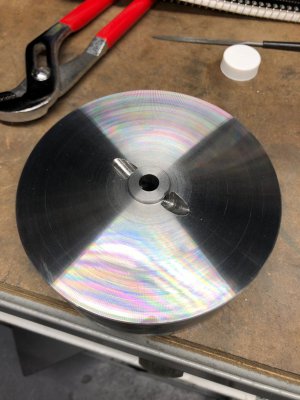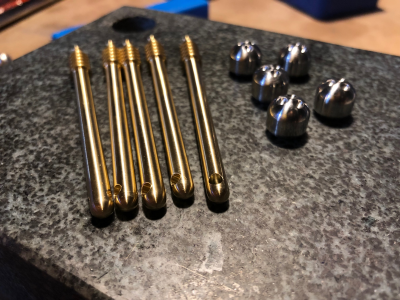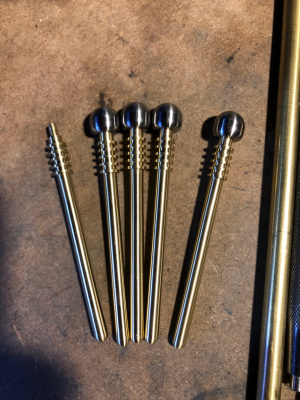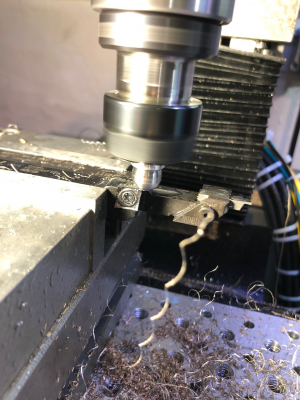I've cut and single point threaded a LOT of austenitic stainless steel over the years but would still defer to John, Mark and David given their production experience. I did want to add a few things, though.
My sense is that you're a novice hobby machinist. No offense, just trying to get a feel for your level of experience. The reason I raise this is because while stainless is not that difficult to work with (it isn't all that hard), it does require you to know how to cut it and experience counts. Every lathe is different, even lathes of the same model, and every user is different. The feeds and speeds listed in tables and charts are intended for industrial lathes and may or may not apply to YOUR lathe.
You also need to know what you're cutting. 303 has sulfur in it so it machines easier and work hardens less. 304 is much harder to cut without work hardening and this is especially true with carbide inserts; 316 is even worse. Work hardening happens with SS because unlike most materials that eject the heat from a cutting operation in the chip, SS tends to retain the heat in the remaining material AND the tool. Temperatures at the point of cut can get into the red heat range on a heavy roughing cut, especially with carbide tools, so work hardening is a real thing. If you can, use 303.
The keys to turning SS is to use a sharp tool, coolant and you must keep the tool cutting - do not dwell or the tool will rub and build heat and you'll work harden in an instant in 304/316; feeds matter, especially with SS. The aforementioned CCMT and CCGT inserts will work and David will set you straight on inserts but I would reinforce that you need a positive rake insert on a small lathe when working SS. With that said, I much prefer a good HSS-cobalt tool for stainless steel because I can get it sharper than any carbide insert and I can grind it to reduce cutting forces so that the tool cuts easier without building a lot of heat. While I normally would turn SS on my Emco lathe, I have cut a lot of 303 and 304 on a little Sherline lathe with HSS tools so I know that these tools work. Cobalt will also hold an edge at high temps so the tools stay sharp longer, even with heavy cuts. The problem is that you have to know how to grind these tools.
Coolant matters, especially when using inserts. For me anyway, coolant is used to reduce temperatures at the point of cut as well as for providing lubricity so use some kind of cutting oil or coolant. Sulfur-bearing oils with EP additives work well, as does the water-based AnchorLube. A coolant stream is ideal but dripping coolant or cutting oil at the point of cut works well enough. Regardless of which way you go, use a LOT to try and keep temps down.
For threading, I own the aforementioned Carmex inserts and they work, especially for smaller threads where the helix angle is less of an issue. However, I actually prefer to use a good HSS-cobalt threading tool with 15 degree relief angles for SS because it cuts cleaner at lower speeds so I don't have to deal with work hardening a thread. I cut straight in with my Sherline and set the compound at 29.5 degrees on my Emco lathe and both methods work well.
Another tooling option would be to consider the
threading tools from AR Warner; they sell both stand up and lay down style inserts that are sharp T-15 HSS inserts and should work well in SS. Their HSS CCMW turning inserts and SCLCR tool holders are also an alternative to carbide turning tools; they are sharp when new and are easily sharpened by flattening their tops on a fine or extra-fine diamond stone so you might look into them.
Whichever tooling system you choose, practice. These tools don't just magically make you capable just by owning them. You need to learn which speeds, feeds and depths of cut work on the machine you have and the only way to learn this is to cut.




